With a lot of you working from or otherwise hanging out at home, I hope a lot of my readers are using their time to learn some stuff. One thing I hope everyone stuck at home is doing is dry-practicing. Another thing that might nudge some into dry practice is the current ammo shortage. Today I’m going to talk about some very simple, low-cost things you can to do increase the value of your dry practice time.
This article contains affiliate links.
Intro: Read this!
First, I am not a fan of the term “dry fire.” If all you’re doing is “firing” you’re missing out on a massive spectrum of things you can practice. If you’ve followed my dry practice posts this year you’ve already gotten a taste of this. I’ve practice presentation, trigger, reloads, malfunction clearance, SHO stuff. . . and I’m a long way from done.
Second, novelty is your enemy. If you’ve already encountered something in training that closely mirrors an actual encounter you experience, you already have a mental model constructed to deal with that situation. For example: the first time you see your sights in reduced light shouldn’t be while you’re defending the lives of your wife, your child, and yourself. You should know what that looks like and not be surprised and distracted by it. We can’t possibly imagine everything – there are simply too many variables out there. We can, however, chip away at the iceberg of novelty by accounting for as many of these variables as possible and adding them into our routines.
A couple caveats: First, ensure you are adhering to safety best practices. Now is not the time to be in the hospital because of a gunshot wound, or the time to be You don’t need much gear to dry practice but I do strongly recommend the use of some snap caps. I strongly prefer A-Zoom snap caps. I’d be willing to bet there isn’t a run on these and they will last you for a very, very long time. Get some now.
Let’s get into today’s topic. In the last post I talked about varying lighting conditions. Today I am going to talk about the variable of your targets.
Variable 2: Targets
Just like lighting, your targets should attempt to banish novelty. If all you practice is standing in front of a single target clicking the trigger you’re missing some valuable training opportunities. You should practice working around targets that are near, far, big, small,
Another note for those of you who are cash strapped: I made the silhouette targets used in this article from cardboard boxes I had lying around after my move. You can tell these targets are extremely well-used. You don’t need to spend $75 on a case of IDPA targets to start training. You can find dimensions for an IDPA target here, or make a target of your own design.
Target ideas
I spend a lot of time changing my targets up in an effort to fight both novelty (in the real world) and boredom (in dry practice). Here are a few of the variations you might want to consider.
One target. This is probably what most of us work with most of the time, on the range and in whatever dry practice we do. Pardon the unfocused pic.
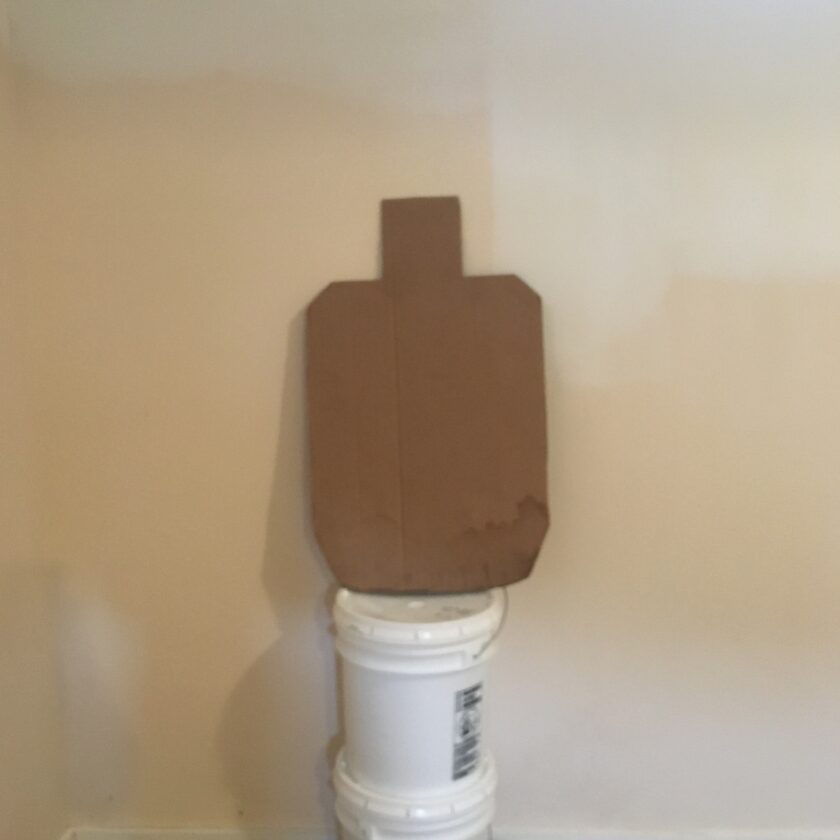
Two targets, side-by-side. This is not a bad arrangement, and one you should be practicing. This is great for working target-to-target transitions.
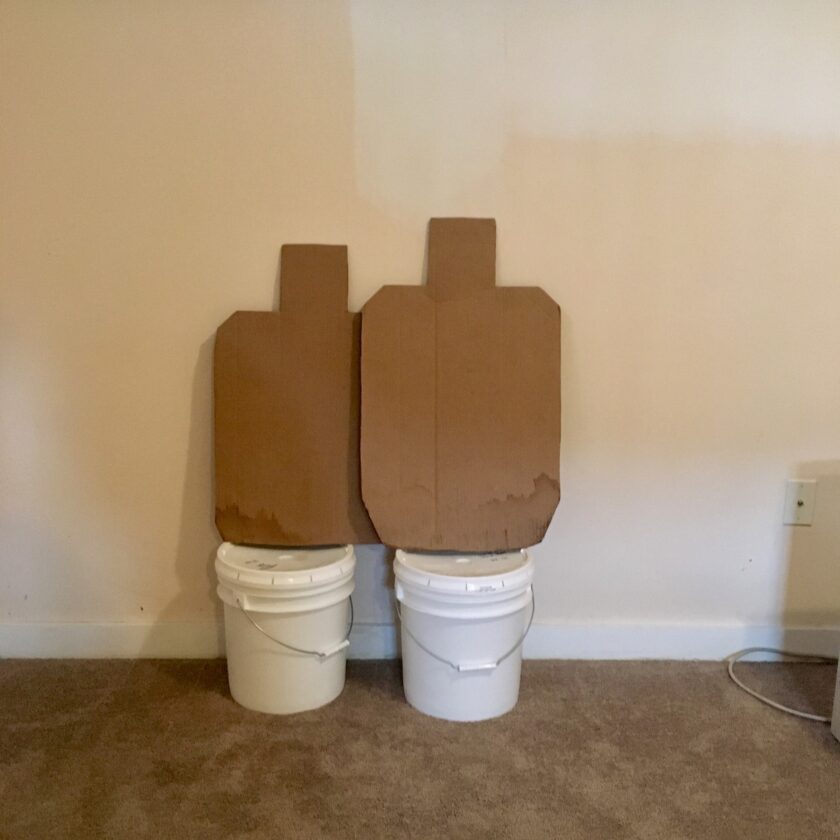
Two targets, spaced far apart. This is great for “driving” the gun from target to target and leading with the eyes. The closer you are to the targets, the steeper the angle and greater distance your gun must traverse. Work this across the full range of distance you have available to you.
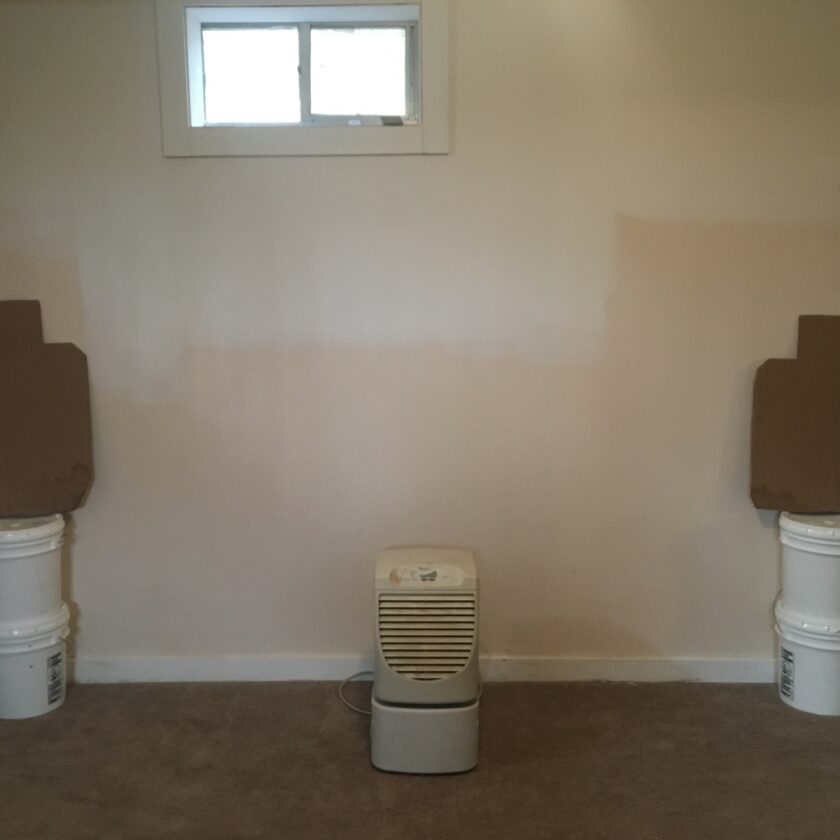
Targets at different heights. Another form of novelty. Humans are different heights. They can be sitting, kneeling, standing, or lying down, or varying combinations. Be used to working targets at all different heights, and transitioning between targets of varying heights.
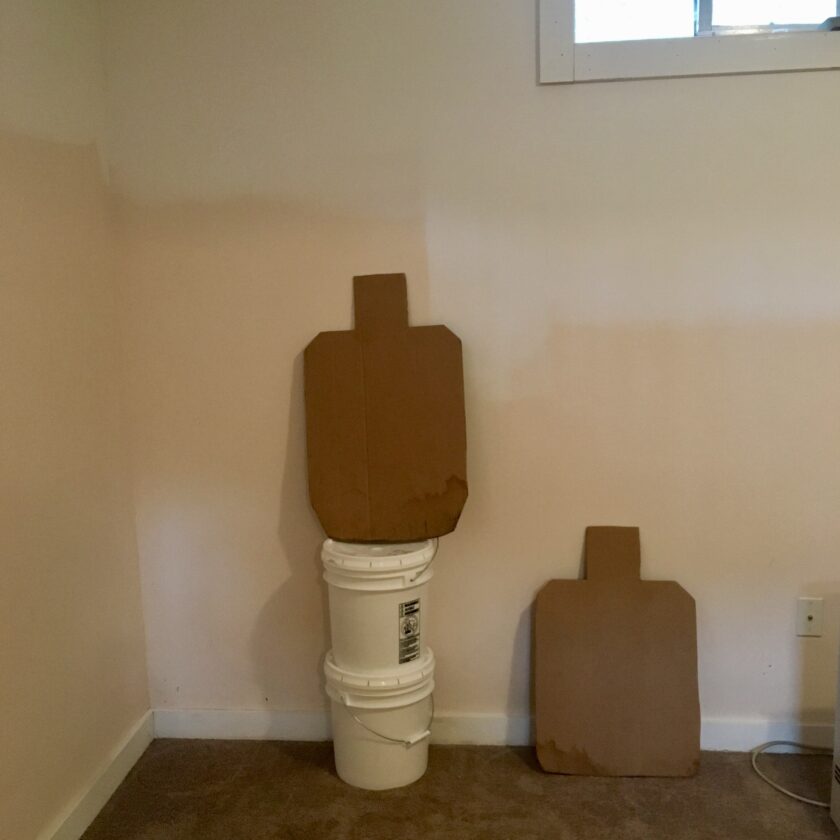
Targets at different depths in the room. Another opportunity to work transitioning from target to target. This is also a good opportunity to think about precedence, or who gets addressed first (probably the one closest to you). If you’re varying your lighting, a good range of depth can put each target in it’s own, separate lighting condition (you get a hint of that in the photo below).
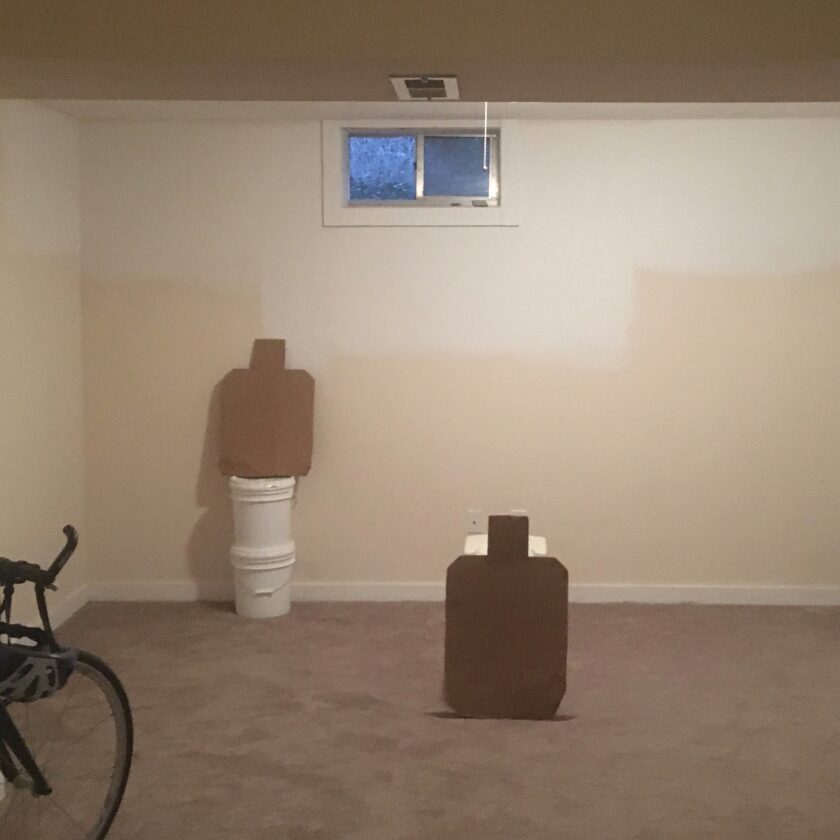
Scaled Targets. I really like working on targets of varying size. This doesn’t always mean using a 1/3-scale IPSC/IDPA target, though. Sometimes this can mean using a paster sticker as a very small aiming point. This has a some benefits. First, if you’re used to shooting at the whole target, your hits are probably all over the target. A smaller aiming point can reduce your group size.
Second, it can also slow you down, especially in dry practice. Usually, when working reloads or malfunctions I make myself use a smaller aiming point. I find that when I get going really quickly, clearing a tap/rack malfunction for instance, I tend to rush to get the next shot on the target. A small aiming point forces me to slow down and ensure a follow-up hit.
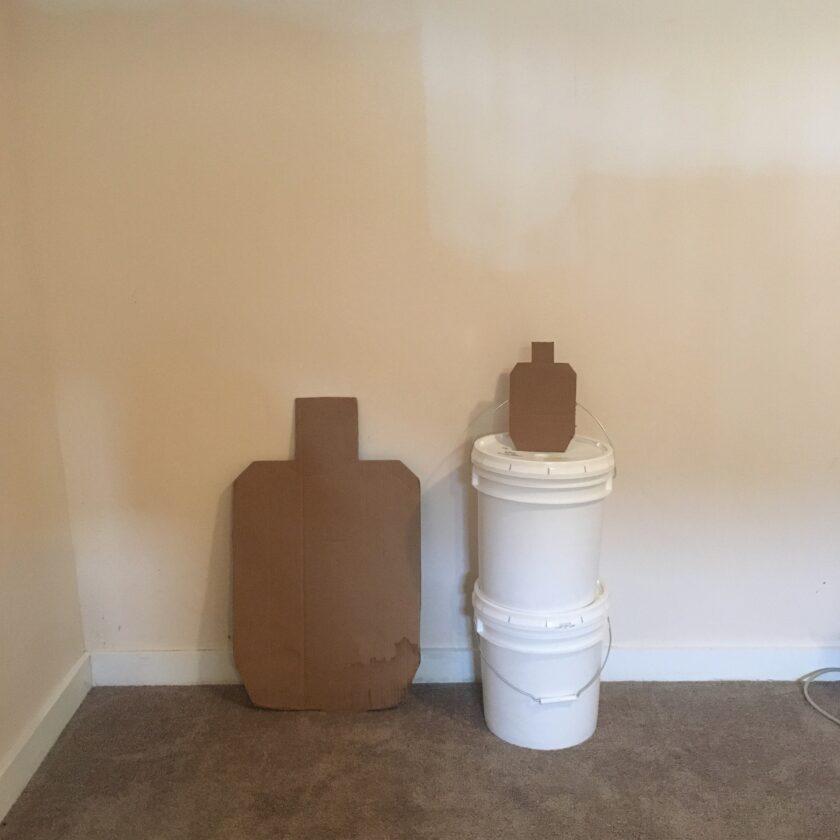
Low-Probability Targets: Just like using smaller targets, this can get you used to shooting at something other than a full-sized target. it can also get you used to the idea that your adversary probably isn’t going to stand there giving you a full frontal while you draw your gun and sort yourself out. He is probably going to be using cover and concealment just like you should be.
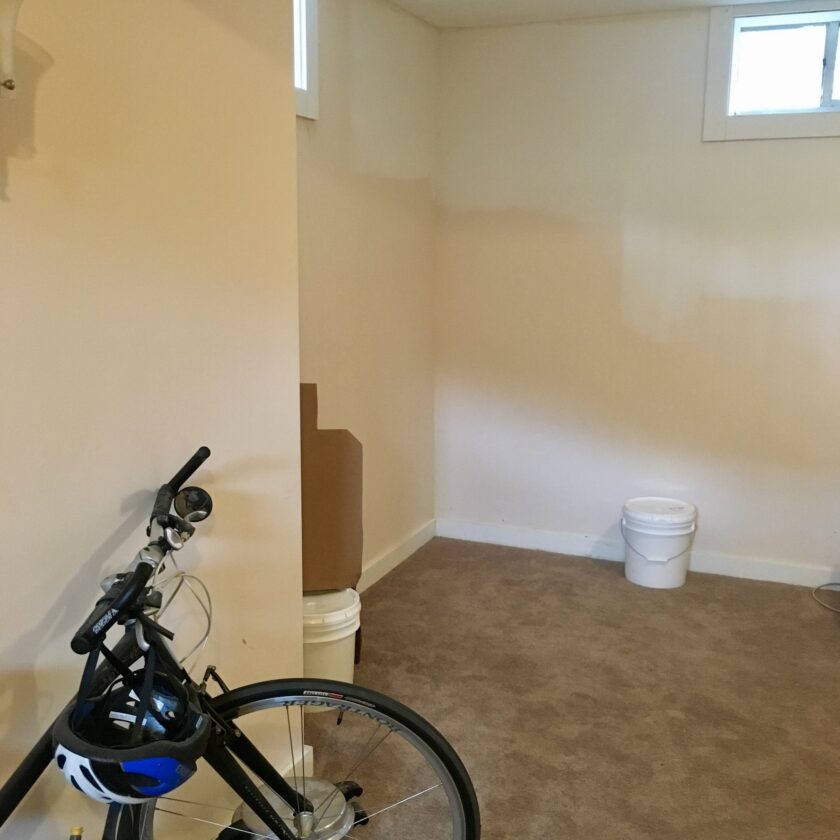
Multi-directional targets: Depending on the shooter’s angle to the target(s) this can force you to transition as much as 90 degrees.
IMPORTANT: you should only do this if your safe backstop supports two directions and everything in between! Do not take shortcuts with safety!
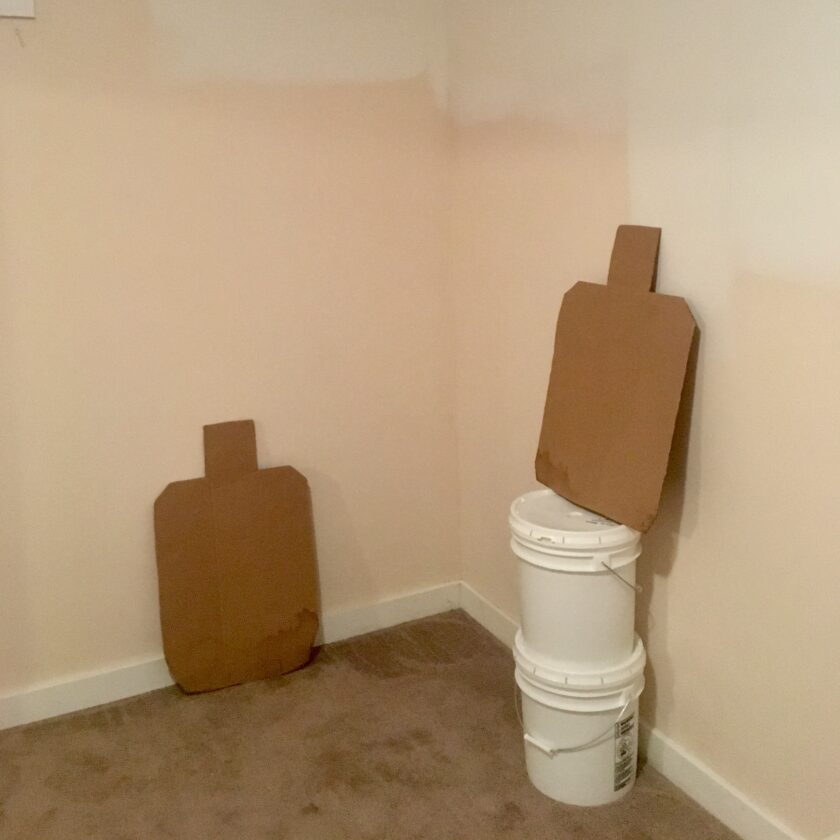
Photorealistic targets. I need to get on this one. Looking at photographs of humans (at least occasionally) rather than always looking at silhouettes is advisable. This is recommended by Tom Givens in Concealed Carry Class, and I admit I’ve been lazy about ordering some photo-realistic targets.






1 thought on “Dry Practice Function Stacking: Targets”
Comments are closed.